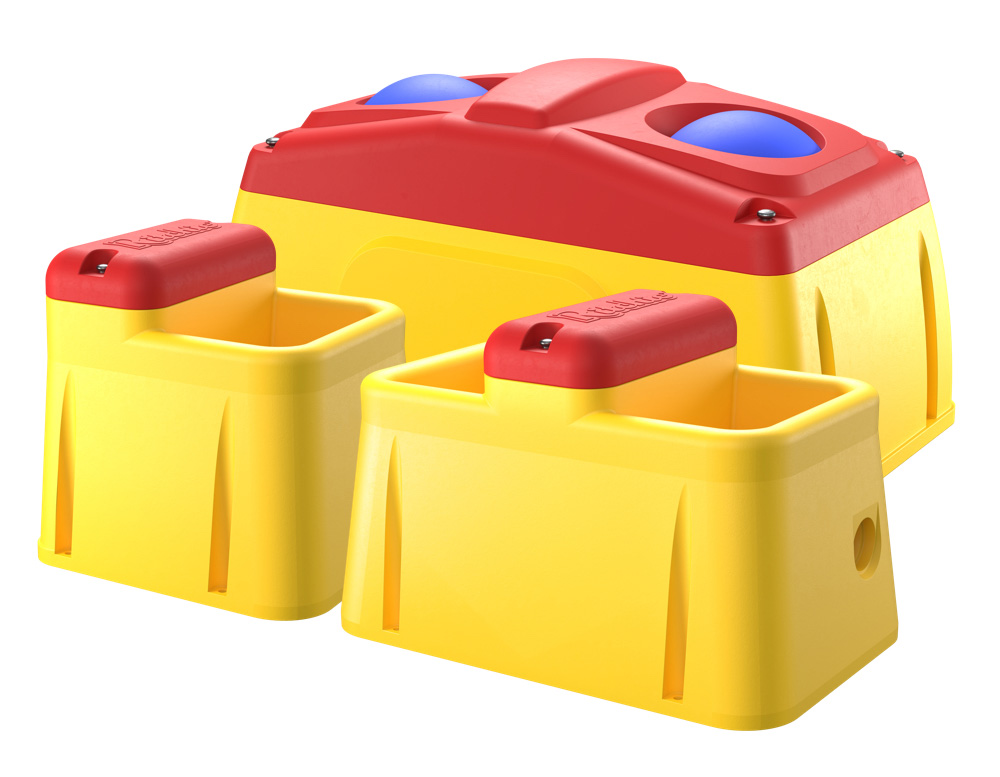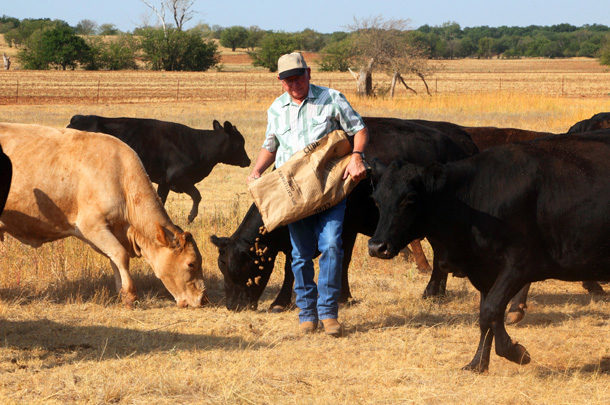The first puffs of black smoke can drive fear into the heart of the most hardened cattle rancher. Wildfire season has morphed into a year-round issue for many farms and ranches in the Western U.S. The reasons why can be up for debate, but the bottom line is that cattle ranchers need to have a wildfire preparedness plan that can be implemented at a moment’s notice. This includes planning for watering your herd when wildfires strike.
According to the National Interagency Fire Center (NIFC) located in Boise, Idaho, there were 58,950 wildfires that burned over 10.1 million acres in 2020. With almost 60% of the continental U.S. in some form of drought at the end of June 2021 and abnormally high temperatures this summer, it is anticipated that wildfires will continue to plague our Western states in record numbers.
Wildfires Can Lead to Evacuations – Plan Now and Be Prepared
Cattle are attuned to the sights, sounds and smells of fires within their sensory range. The surface speed of fires can range anywhere from 5 to 40 miles an hour and their path can be unpredictable. Once cattle detect a fire, their flight or fight instinct is activated which can lead to a wave of panic as cattle are sent scrambling into fences, gates and other barriers as they try to escape the heat and smoke. Many cattle are injured or killed every year when they try to flee a wildfire.
Be prepared and develop your wildfire action/evacuation plan. Evacuation plans should include creating escape routes through fences and barriers to safe zones. Be mindful that normal handling techniques may not be effective with animals who are in panic mode and this includes your horses and livestock guardian animals. Safe zones should be prepared in advance or be a place where you can transport your animals.
Safe zones are wide, cleared, open areas where fuel for the fire has been removed and the fire burns around you. Examples include large gravel lots; large asphalt parking lots; large, dirt riding arenas; wide, flat riverbeds with little vegetation nearby or a running creek or river can be a safe zone as long as it is not in a canyon with vegetation on the banks.
The safe zone should be as large as you can possibly make it in relation to the height of the nearest vegetation. Fire specialists recommend that if your safe zone is a field surrounded by trees 50 feet tall, your safety zone should be at least 450 feet (150 yards) in diameter. Burning trees emit a tremendous amount of radiant heat which can damage the skin and lungs of cattle and people alike. Burning grass, on the other hand, puts off much less heat, and could require a safe zone only 60 feet in diameter.
If the wildfire spreads too fast, sometimes the only option is to turn your animals loose. If this happens, try to provide identification for your livestock, sometimes that means spray painting phone numbers on your cattle’s side or attaching luggage/ID tags. Try not leave halters or headstalls on animals you have to release because they can cause additional harm by catching on trees, equipment and other obstructions.
Do not tie animals together when releasing them in an effort to make it easier to recover them later. The connection creates a hazard for the animals and people trying to recapture them. Also, report the location, identification and disposition of your livestock to authorities handling the disaster; especially if your animals are aggressive or nervous by nature.
During and After the Wildfire – Clean, Fresh Water is Critical
Whether you evacuate to a safe zone or shelter in place, cattle ranchers and farmers need to plan to have a reliable source of fresh water on hand.
“During a drought or post fire, livestock drinking water may be compromised,” said Tracy Schohr, a partner at Schohr Ranch and a Livestock and National Resources Advisor at University of California Cooperative Extension. “Water is the most critical factor for cattle producers, without enough clean safe water you can have reduced productivity, declining feed intake and negative impacts to physiological processes, which can result in death. Hauling water can be an option for livestock producers post fire and as a drought adaption strategy.”
Portable automatic waterers that can be hooked up to a water source through a garden or supply hose can be a quick and easy way to provide clean, fresh water to your cattle on a temporary basis. The leading manufacturer of both portable and permanent livestock automatic water solutions is Ritchie Industries, based in Conrad, Iowa. Ritchie Industries has been in business for 100 years and has sold over three million waterers worldwide. The founder, Thomas Ritchie of Oskaloosa, Iowa was a farmer and the inventor of the first automatic waterer device in 1921. Today, Ritchie Industries continues to design and engineer their products to meet the ever-changing needs of ranchers, farmers and horse owners.

“Ritchie Industries engineered and designed a line of portable waterers called the Genesis series that are perfect for serving the temporary water needs of wildfire affected cattle or ranchers supplementing their water sources due to drought,” said Tad Upah, Director of Engineering at Ritchie Industries, Inc. “The Genesis line of products are lightweight making them easily transported and installed.
Due to the single wall construction, the water supply hookup can be placed anywhere on the unit to facilitate hook up with a garden hose or supply hose. Regardless of the hookup style, whether it be a yard hydrant, a house spigot or a storage tank, our Ritchie valves will accommodate all types of flow. Although they are light weight, they are still manufactured to the same tough quality standards as all of our products and will hold up to the abuse in a pasture or feed lot application for livestock.”
Another viable option to consider is hooking up portable or permanent waterers to a water source with a solar pump. Solar pumps can provide multiple benefits for cattle grazing operations, including facilitating livestock distribution across the landscape, water security during a drought and those on solar would not be subject to summer grid power outages.
“Ritchie automatic waterers can be hooked up to an alternate energy application such as solar power,” said Upah. “Ritchie waterers work on standard 120V and are very energy efficient which means the draw on the power storage system for solar will be nominal. One of our best-selling product lines are the Thrifty King series because they are energy free.
The water is completely surrounded by fully insulated polyethylene plastic - even the floats are insulated. In summer, the water stays cooler and covered which protects against mosquitoes breeding, lowering the risk of spreading West Nile Virus. The covered water also prevents water evaporation during dry months. The Thrifty King units can be used with an immersion heater as well in the cold months and due to the extra insulation, it uses a very minimal energy draw which is perfect for solar or off-grid applications.”
Recovering from the Wildfire – Disaster Relief Programs Are Available
Once the wildfire passes, you will be able to assess the damage and begin the process of rebuilding. Your local Farm Service Agency (FSA) office is the place to start when applying for fire recovery assistance. There were three specific wildfire recovery programs created. These include:
- Emergency Assistance for Livestock, Honeybees, and Farm-Raised Fish Program (ELAP) which provides emergency relief for losses due to wildfires. Coverage includes costs associated with the movement of livestock, stored hay that was burned and grazing losses.
- Livestock Indemnity Program that covers livestock death loss.
- Emergency Conservation Program that cost shares with producers to repair water infrastructure and troughs, replace fencing and removal of burned debris.
Summary
Wildfires impact the short- and long-term management of your cattle operation. It is critical that you prepare and plan to minimize the effects on your cattle and your resources. Securing your water supply through portable options or alternative energy sources is a crucial step to keeping your herd healthy throughout the challenges of drought and wildfire recovery.
For more information about livestock watering systems visit Ritchie Industries.
UC Cooperative Extension has more information on post urban fire impacts to livestock drinking water and forage.
The UC Drought Decision Support Tool for ranchers can help with cost-benefit analysis of drought strategies, including hauling water.
For more information for producers who are looking to install new water systems, the Natural Resources Conservation Service – Environmental Quality Incentives (EQIP) program can provide cost-share assistance.
PHOTOS: Courtesy of Ritchie Industries.






